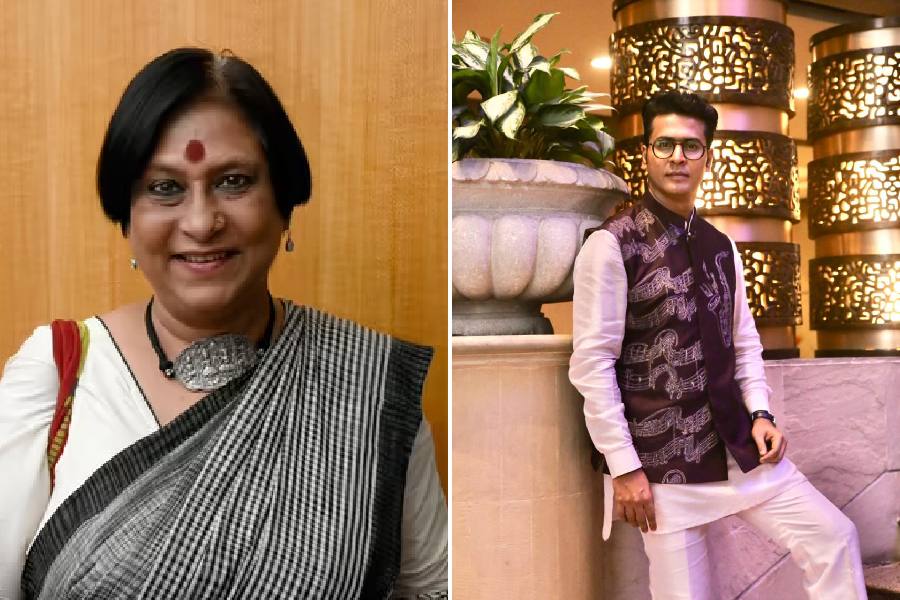Saburo Kase was born with impaired vision and at age 12, he completely lost his eyesight. That defining moment in a Tokyo boy’s life gave the world one of its greatest living origami artists. “Nobody knows what I would have become if I was not blind,” says the 76-year-old, in Calcutta to conduct a series of origami workshops at the initiative of the Indo-Japan Welfare and Cultural Association. “Perhaps I would have fulfilled a boyhood dream of joining the army,” he grins, after spending a day with the boys at Narendrapur Blind School.
Kase did make it to another battlefield — on paper. “My mother had taught me the art of paper-folding when I was five. Since I could not see, I would sit at home, creating complex shapes with my fingers when other boys would be playing outside,” he recalls, in animated Japanese.
“Every time I create a new shape, I feel an intense satisfaction,” says the director of Nippon Origami Association, who has the Prime Minister’s Award (1987) and two Orders of Merit to his name. It is the spirit to conquer new heights that made Kase launch a bid to scale Mt Kilimanjaro, when he was 63. Following the trail of a rope, the intrepid old man reached a height of 3,300 m.
“Then, he suddenly stopped in his tracks, gasping for breath, with tears in his eyes,” recalls Kase’s travel companion, Eiji Tajima, who heads Origami Diplomacy, a body for the popularisation of the folk art. Kase fondly has not forgotten the smell of wild flowers on the mountains that gave him inspiration to fold new flowers.
Being close to nature is important — he spent Sunday at the Botanical Gardens — as is spending some time at a new place. “I can feel the history and the culture of a land standing near a monument,” says the man, who has toured Cuba and Cambodia, Russia and Romania, spreading the word of origami in more than 40 countries.
Kase’s first trip abroad was to the UN headquarters in 1981, the Year of Disabled Persons. “He was so popular in Tokyo that thousands sent donations so he could go to New York to exhibit his models,” says Tajima.
The two-month trip across the US made him want to “see more of the world and meet more people”. So, he does two countries every year on an average, but refuses the tag of a goodwill ambassador. “I am a simple man who wants to communicate with the people of the world through my art.”
After “sight-seeing” in Narendrapur and Shibpur over the weekend, workshops will keep him busy at the Assembly of God Church and Calcutta Girls schools. But Kase isn’t complaining. “The last time we were here, in 1983, we were stuck in a 72-hour strike,” smiles the septuagenarian, who finds “spiritual solace” in India.











